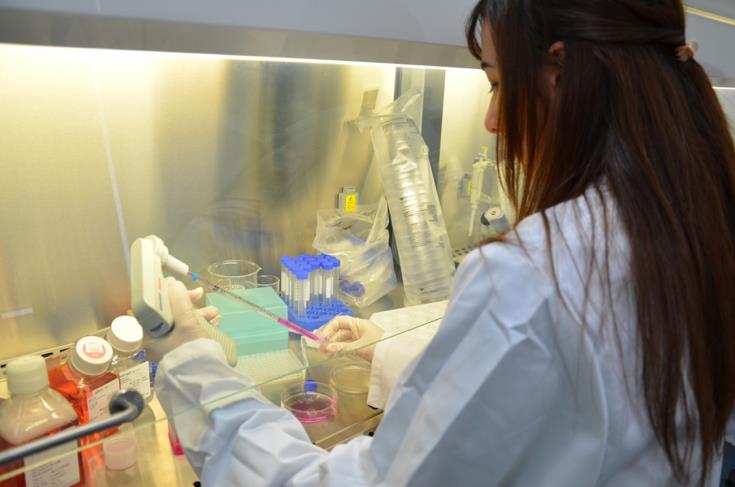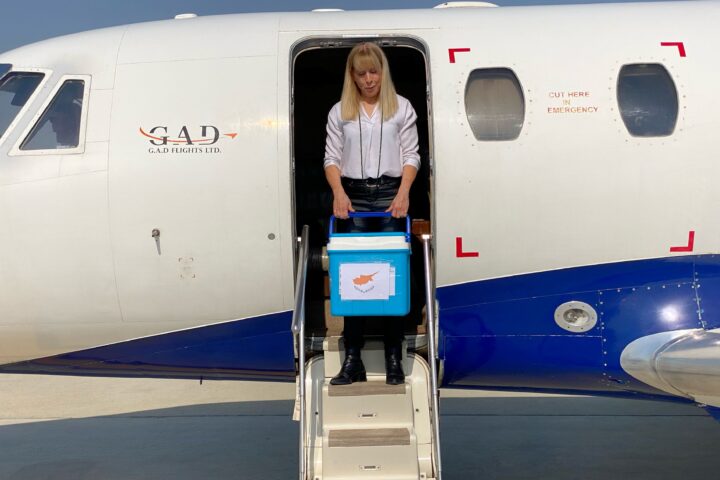By Prof. Philippos Patsalis
Some 350 million people – this the total number of people worldwide that are affected by rare diseases.
Still, most rare diseases lack standard treatment, support groups, even pathophysiology and cause of illness.
Individual diseases may be rare, and the number of patients affected by a rare disease may be few, but collectively, rare diseases are not rare.
According to European terminology, a disease is termed ‘rare’ if it occurs in less than 1 in 2,000 people.
And 80% of rare diseases have genetic origins caused by single genes, chromosomal or multifactorial reasons.
Rare diseases can manifest from infections or environmental causes, or they are presently classified as ‘rare’ due to healthcare advances – smallpox and polio are now considered rare diseases due to the effect of vaccinations.
Today, there are over 7,000 rare diseases worldwide.
On average, it takes 8 years for a patient affected by a rare disease to receive an accurate diagnosis.
A significant number of patients receive wrong diagnoses, resulting in inappropriate medication, unnecessary surgeries, and improper care.
The patient journey doesn’t end with a diagnosis.
Τhe most crucial part is finding the proper treatment that will be beneficial for their condition, but for 95% of rare diseases, there isn’t an FDA-approved treatment.
Half of all patients diagnosed with a rare disease are children – 30% of which unfortunately will not live to see their 5th birthday.
The challenges imposed by rare diseases are many. Different obstacles exist for each category group that interacts with them – the patients and their families, the healthcare providers, the researchers, and the industry regulators.
To start with, rare diseases are challenging due to their unique and complex characteristics, making their diagnosis intricate and time-consuming.
The patients themselves struggle with the diagnostic delays, the lack of available treatment and the difficulty to find the right – if they exist at all – health services for them.
Additionally, patients also face economic hardships as they often must pay out of pocket expenses due to the lack of structured healthcare system programs for rare diseases.
All this on top of fighting a chronically debilitating disease that often no one can offer help for.
As a result, patients feel isolated, anxious, and under-supported by their general practitioners, the health industry and society.
Challenges
The challenges faced by healthcare providers stem from the limited information that exists for rare diseases.
Because of their rarity, a healthcare provider may not have encountered a single patient with that disorder in their career.
Understandably, a practitioner cannot know the pathophysiology of 7,000 rare diseases, especially when this information is not available or scattered across research institutions and continents.
This lack of knowledge and access to available information considerably hinder healthcare providers’ ability to diagnose and treat a rare disease.
Researchers face considerable hurdles when studying a disease that is so rare that neither basic knowledge such as cause, symptoms or epidemiological data are identified or are accessible, nor funding is offered.
Rare diseases are also called ‘orphan diseases’ due to the pharmaceutical companies’ lack of interest to invest in them.
This disinterest from pharmaceutical companies arises from the reality that such a drug’s market share will be scarce.
Consequently, for the pharmaceutical companies to achieve reimbursement, the product’s cost will be disproportionately high for the patients.
Finally, the obstacles faced by industry regulators in designing and approving the release of drugs for rare diseases to the market concern the validity and accuracy of designing clinical trials for these drugs.
The absence of animal models and computer simulators for rare diseases, the small number of medical experts, the limited and geographically dispersed number of patients diagnosed with a rare disease able to participate in a clinical trial affect successful drug development.
If we break down all the challenges of rare diseases, we conclude two main issues at the core of the obstacles we face: the reduced number – of patients, experts, information, funding, support, and resources – and the economic cost.
These prove one thing – that there is strength in numbers.
Small countries face an even greater geographical, populational, financial and resourceful disadvantage.
However, no country – big or small – can master these challenges alone.
We must work collectively at the European and international level to bring together a vast array of knowledge, expertise and resources.
At present, important steps are in place that aid in promoting awareness and action for rare diseases.
The 30 million Europeans and the 350 million people worldwide affected by rare diseases are patients that deserve proper diagnosis, care, and treatment.
Our commitment to advocating for patients, forefront scientific advancements, and establish the foundations for lasting healthcare policies are more important than our geographical area and population statistics.
Collaboratively, as healthcare practitioners, decisionmakers, and industry regulators, we can drive action to benefit patients and their families.
Rare diseases are far from straightforward.
An innovative, multi-national approach is our best strategy to improve our understanding and the level of care for patients suffering from rare diseases that currently struggle to get medical attention and the help they need and deserve.
Prof. Philippos Patsalis is CEO of NIPD Genetics










